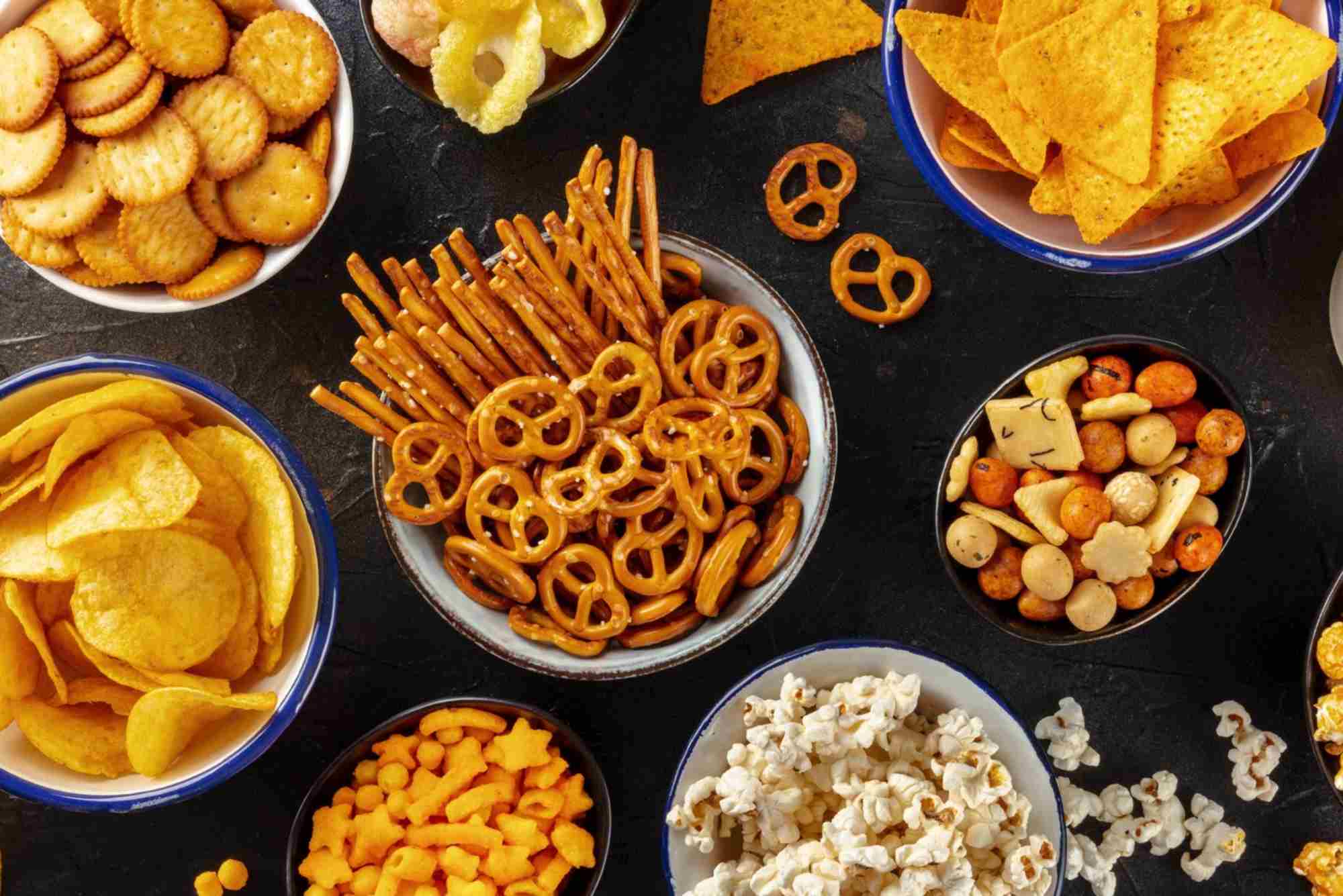50+ Food Texture Adjectives to Improve Your Menu Descriptions
Choosing the right food texture adjectives can dramatically elevate the appeal of your menu descriptions. Whether you’re writing for a fine-dining restaurant, a street food stand, or an online food blog, the way you describe texture shapes the customer’s sensory expectations before they even take a bite. Texture gives dishes dimension—it can make a salad seem fresh, a dessert indulgent, and a steak irresistible. In this guide, you’ll explore over 50 powerful texture adjectives that bring flavor to life through words.
Understanding the role of food texture adjectives goes beyond just sounding fancy. Texture defines how food feels in the mouth. It’s the crunch of a chip, the silkiness of a mousse, or the chewiness of sourdough. When your menu accurately captures these elements, it helps diners make decisions, excites their senses, and sets the right expectations.
The Importance of Describing Texture in Menus
Texture is one of the key sensory aspects of food, alongside taste, aroma, and appearance. But unlike flavor, texture is often underutilized in food writing. Think of two burgers: one described as “juicy with a tender bun” versus just “beef burger.” The first is more compelling. It makes the diner imagine biting into softness, savoring the rich juice, and experiencing comfort. That’s the power of texture-focused language.
From a business perspective, well-written food descriptions improve menu readability, reduce customer hesitation, and increase order rates. When you use vivid texture adjectives, you help customers mentally taste the dish, often leading to faster and more confident ordering.
Crunchy and Crispy Textures
These adjectives are among the most popular and familiar. They indicate freshness, energy, and contrast. A crunchy texture typically involves more density and resistance, while crispy suggests a lighter, delicate break.
Crispy is often used for fried foods like tempura, bacon, or thin-cut fries. Crunchy can describe vegetables like cucumbers or nuts in a salad. Including these terms on your menu adds excitement and a hint of fun.
Examples include: crispy chicken skin, crunchy pickles, lightly crisped pastry, crackly topping.
Smooth and Creamy Textures
Smooth and creamy textures evoke comfort and indulgence. These adjectives work exceptionally well for desserts, soups, and sauces. Smooth implies a velvety, uniform surface or mouthfeel. Creamy suggests richness and often hints at dairy content, though plant-based foods can also be creamy.
You’ll see these used for mashed potatoes, gelato, bisques, and chocolate ganache. They make dishes feel luxurious and soothing. Examples include: creamy avocado spread, smooth pumpkin purée, velvety custard.
Tender and Juicy Textures
Meats and cooked vegetables often benefit from these terms. Tender suggests easy-to-cut or bite-through food. Juicy points to moisture retained in the bite, which is often associated with quality and succulence.
These adjectives suggest proper cooking and care in preparation. Using these food texture adjectives helps convey that your steak won’t be dry and your grilled vegetables won’t be rubbery. Examples include: tender lamb shank, juicy roasted tomatoes, fall-off-the-bone ribs.
Flaky and Buttery Textures
Flaky is especially common in baked goods like croissants, puff pastry, or fish like cod. It implies layers that easily pull apart. Buttery, while technically a flavor word, also describes texture—it implies richness, silkiness, and smoothness.
These adjectives signal delicacy and high craftsmanship, often making pastries and seafood sound more appealing.
Examples include: flaky salmon filet, buttery croissant, golden flaky pie crust.
Chewy and Dense Textures
Chewy food texture adjectives describe a prolonged, satisfying bite. They are often used for bagels, noodles, or mochi. Dense suggests richness and weight, commonly applied to chocolate cake, brownies, or artisan bread.
These adjectives can give a sense of “bite” and satisfaction. Chewy can also indicate high-quality or handmade foods, such as rustic sourdough.
Examples include: chewy udon noodles, dense chocolate torte, hearty chewy granola.
Airy and Light Textures
For dishes meant to be refreshing or elegant, these adjectives work beautifully. Airy and light indicate a sense of ease in eating, a quality often prized in soufflés, whipped creams, or mousse.
Use these when you want a dish to sound uplifting and graceful. They’re ideal for desserts, cold starters, and fusion appetizers.
Examples include: airy lemon mousse, light sponge cake, featherlight pavlova.
Sticky and Gooey Textures
These terms are fun and often used in indulgent or nostalgic contexts. Sticky is common with barbecue sauces, toffee, or rice dishes like sushi. Gooey evokes oozing richness, as found in melted cheese or chocolate lava cake.
These food texture adjectives suggest intense satisfaction and make the diner imagine the food melting or clinging—a desirable sensation in certain dishes.
Examples include: gooey mac and cheese, sticky date pudding, caramel-glazed ribs.
Firm and Bouncy Textures
Firm can suggest precision and integrity in texture, often used for cheeses, grilled tofu, or fruits like pears. Bouncy is more playful and used for foods like fresh shrimp, jellies, or boba.
Both convey freshness and integrity—your food hasn’t gone mushy or stale. They’re especially useful for describing items that need structural integrity but still give way nicely.Examples include: firm tofu, bouncy fish balls, springy rice cakes.
Grainy and Gritty Textures
While these adjectives might sound negative, they have culinary uses when applied accurately. Grainy can describe polenta or almond butter, while gritty may describe sugar-crusted pastries or natural nut spreads.
Used appropriately, they give an authentic, rustic vibe to dishes. Just be careful not to use them with items meant to be smooth. Examples include: grainy tahini sauce, gritty sugar topping, coarse-ground mustard.
Silky and Satiny Textures
Silky is a high-end way to describe smooth textures, often used in fine dining or upscale menus. Satiny is a poetic alternative, ideal for emphasizing delicacy and elegance.
They evoke a sense of perfection in dishes that should glide across the tongue. They are well-suited for sauces, soups, and custards. Examples include: silky carrot soup, satiny béarnaise sauce, luxurious truffle cream.
Fuzzy, Woolly, and Velvety Textures
These more abstract adjectives are best reserved for creative or upscale menus. Fuzzy and woolly can describe certain fruits or experimental dishes with unique textures. Velvety is a favorite for wines, desserts, and sauces.
These terms suggest a tactile, almost emotional reaction to food. Use them when you want diners to pause and feel curious. Examples include: velvety chocolate ganache, fuzzy peach skin, woolly fig interior.
Why Texture Should Never Be an Afterthought
Texture completes the sensory journey. While flavor may grab the spotlight, the feel of food in the mouth can either satisfy or disappoint. In writing, it bridges the visual and the experiential.
Diners often don’t consciously think about texture until it’s wrong. That’s why emphasizing it in menu descriptions helps highlight your attention to quality and detail. Whether your food is rich and creamy or crisp and refreshing, texture-based language brings it to life for your guests.
How to Use Texture Adjectives Naturally
When crafting menu descriptions, don’t overdo it. Choose one or two carefully selected adjectives that genuinely reflect the dish. Pair texture with flavor and origin for the most complete sensory picture.
Instead of writing “Chocolate Cake,” say “A dense chocolate cake with a velvety ganache center.” It’s short, vivid, and instantly paints a picture. Remember to keep your descriptions consistent with what the customer will actually experience. That builds trust.
Texture Is the Language of Satisfaction
In food writing and menu creation, texture is often the missing link that brings your dish descriptions from ordinary to extraordinary. Using the right food texture adjectives invites diners to not only imagine the flavor but to feel the dish before tasting it. From the crunch of a golden crust to the smooth silkiness of a panna cotta, texture makes the language of food complete.
FAQs
What are some good texture words for desserts?
Creamy, silky, gooey, airy, soft, velvety, fluffy, crunchy (for toppings), and smooth are great for dessert menus.
How can I describe crunchy food?
Use adjectives like crispy, crackly, crunchy, or even brittle, depending on the level of texture. You can pair them with sound words too, like “with a satisfying crunch.”
Which texture words are best for meat dishes?
Juicy, tender, succulent, firm, flaky (for fish), fall-apart, or melt-in-the-mouth work well for meat and protein dishes.
What’s the difference between crispy and crunchy?
Crispy usually refers to a thinner, delicate exterior (like chips or bacon), while crunchy implies a denser texture that resistsmore (like raw carrots or nuts).
Can texture words be used in drink menus too?
Yes, absolutely. Drinks can be described as silky (smooth wines), fizzy (carbonated), creamy (milkshakes), or velvety (red wines or smoothies).





